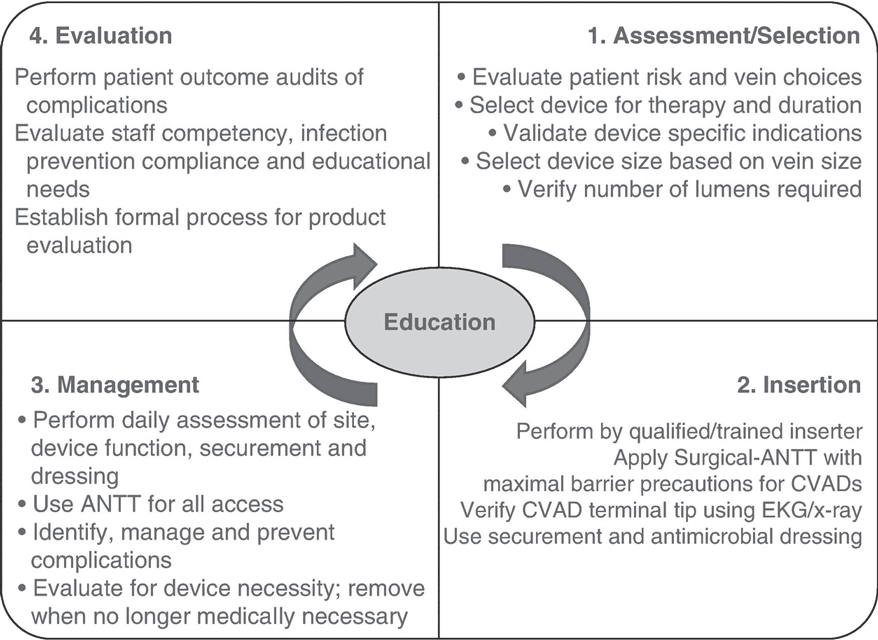As a recognized nursing specialty, infusion nursing includes the placement, care, and management of a vascular access device (VAD), administration of a wide variety of infusion solutions and medications, and related assessment and monitoring. The intravenous (IV) route is the most commonly used infusion route; however, other infusion routes include intraosseous, subcutaneous, and intraspinal. Such non-IV infusions may be appropriate for administration in certain situations and with selected fluids and medications. Infusion therapy is administered in all health-care settings, including hospitals, long-term care facilities, outpatient settings, physician offices, and patients' homes. In fact, the majority of hospitalized patients will have a VAD and receive some type of infusion therapy, and most nurses at some point in, or throughout, their career will be involved in infusion care. The patient populations served by this specialty practice range from neonates to elderly patients. Because VAD care and infusion administration have become such common areas of nursing practice, nurses may consider these practices very routine. However, there are risks, some complications are serious and even life-threatening, and many complications are preventable with sound nursing care.
Vessel Health and Preservation is a model applied to VAD insertion, care, and infusion administration. This model comprises four quadrants of care addressing VAD selection, insertion, care and management, and evaluation (Moureau, 2019) (Fig. 1-1). Prioritizing vessel health is incorporated into the Infusion Nurses Society (INS) Infusion Therapy Standards of Practice (Gorski et al., 2021; p. S74, S81, S95, S183). Regardless of the setting, the nurse must have a thorough understanding and knowledge of the type of access device being utilized, the appropriateness of the selected device for the prescribed therapy with attention to care and maintenance of the device, the potential complications related to the device and infusion solutions, and techniques for safe infusion administration. As stated in the INS Standards, infusion therapy is provided with attention to quality and patient/health-care provider safety; care is individualized, collaborative, evidence-based, culturally sensitive, and appropriate to patient/caregiver age and level of cognition (Gorski et al., 2021, p. S13).

This chapter provides an overview of professional practice issues relevant to infusion nursing practice. The practice of infusion therapy includes nursing management and coordination of care to the patient in accordance with:
1.State Nurse Practice Acts
2.Standards of practice, including those established by the INS
3.Organizational policies, procedures, and/or practice guidelines
4.Accreditation requirements
 NURSING FAST FACT!
NURSING FAST FACT!The professional practice of infusion nursing was formally recognized in 1980 when the U.S. House of Representatives declared January 25 as IV Nurse Day! |
 Media Link: Chapter post tests and answers are provided on FADavis.com, along with case studies and critical thinking activities.
Media Link: Chapter post tests and answers are provided on FADavis.com, along with case studies and critical thinking activities.